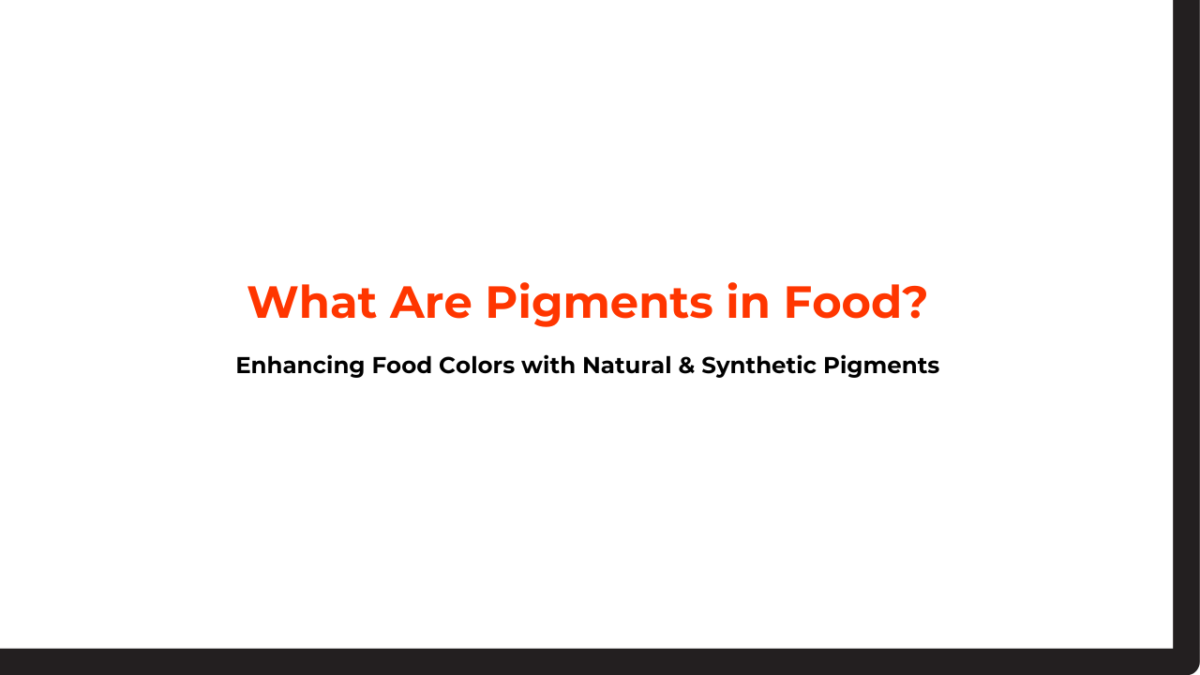Synthetic food pigments, also known as dyestuffs or synthetic food dyes, impart color to the food, making it more appealing and attractive to consumers’ eyes. Synthetic food pigments are cost-effective, stronger, and longer-lasting than natural pigments identified in various food applications. In this blog, you will learn what pigments are used in food applications.
Patent Blue V and Indigo Carmine are a few commercial names for synthetic food pigments.These food pigments are further classified into two major types: azo food pigments and non-azo food pigments. It is more common to categorize them by their predominant shades, for example, yellow, red, and blue pigments.
Choosing the right food colors is essential when it comes to coloring food and beverage items. These pigments are derived from mineral sources, making them the strongest & stable food colorants available. If you’re wondering about color pigments in food, including their uses and benefits, continue reading this blog.
What Are Food Pigments?
What are synthetic food pigments, and why are they used in food and beverage items? Food pigments are chemical dyestuffs that provide color to food products. These pigments could be natural or synthetic and are widely used to enhance food’s color, taste, and appeal. Natural food pigments are derived from natural sources, including green vegetables, fruits, plants, and other organisms.
On the other hand, synthetic food pigments are produced synthetically using coal-tar or petrochemical reactions between two or more compounds, which are carried out in a laboratory. Furthermore, most color pigments, especially those derived from naturally occurring sources, do not require FDA Batch Certification and can blend with other colors to create unique shades and opacity.
Types of Pigments in Food
Food pigments impart color to improve the visual appearance of food products. They also make products more tasty, adding necessary nutrition and health benefits. Here are the following types of food pigments:
- Chlorophyll: This green pigment is naturally derived from plants and offers nutrients like Kale and Spinach. It is essential for the application of photosynthesis.
- Carotenoids: Color pigments like beta-carotene and lycopene, which are derived naturally, give carrots and tomatoes their distinct yellow, orange, and red hues and multiple health benefits.
- Anthocyanins: Water-soluble pigments impart more beautiful purple, blue, and red colors in grapes, cabbage, and berries. This type of food pigment offers rich antioxidant properties.
- Betalains: These pigments are derived from vibrant beets, certain cacti, and more stunning red and yellow colors. They are best known for their multiple health benefits.
- Melanoidins: These pigments help create the delicious browning that results from the Maillard reaction occurring during cooking when proteins and sugars interact. They are widely used in foods such as coffee and toast.
- Flavonoids: This type of pigment comprises anthocyanins and other pigments that improve the color of fruits, vegetables, and flowers.
- Tannins: Tannins impart color to various foods and beverages, especially red wine, enriching the sensory experience. They are best known for their unique astringent taste.
- Synthetic dyes: These are dyes or colorants derived from tartrazine and red 40, widely used to improve the visual appeal of products & make them more eye-catching to consumers.
Noticing the role of these pigments in food quality and their potential health benefits is important not only to savor the natural beauty of food but also to foster an appreciation of their potential and important functions as pigments.
Benefits of Pigments in Food
Pigments provide numerous benefits, including color improvements, antioxidant properties, and nutritional value. Here are some of the top benefits of using pigments for various food applications:
- Food pigments make products more appealing and attractive.
- Pigments reduce color loss during storage conditions or food processing.
- Pigments eliminate the overall risk of chronic diseases like neurodegenerative conditions, cardiovascular disorders, or cancer.
- Pigments maintain color variance between different ingredients.
- Pigments minimize oxidative stress levels in the body.
Uses of Pigments in Food
The primary use of pigments is to add color, enhance taste, and increase the overall appearance of food products, including:
- Color: Pigments can add color to colorless foods, restore lost color, or intensify existing colors.
- Appearance: Pigments are used to determine food products and are concerned with quality.
- Taste: Adding pigments to food can help enhance the overall taste of products.
- Protection: Pigments help in saving flavors and vitamins that are sensitive to light.
- Food safety: Natural pigments are safer & expensive than artificial pigments.
Conclusion
The bottom line is that food pigments not only help increase the overall appearance of products but also add necessary nutrients and tastes simultaneously. These food pigments are widely used in numerous food and beverage products.
Are you a business or individual professional needing premium quality dyes and pigments for food, drug, cosmetics, or personal care products? Look no further than Hridhan Chem Pvt Ltd. The company manufactures and supplies a comprehensive range of synthetic dyes and pigments. Get in touch with us today.




